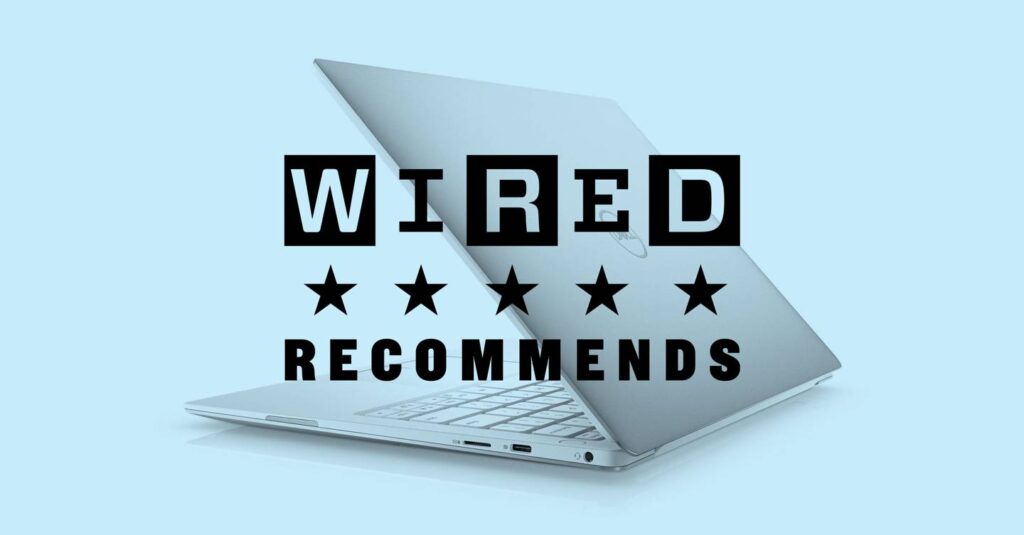
The best laptops for any budget in 2021
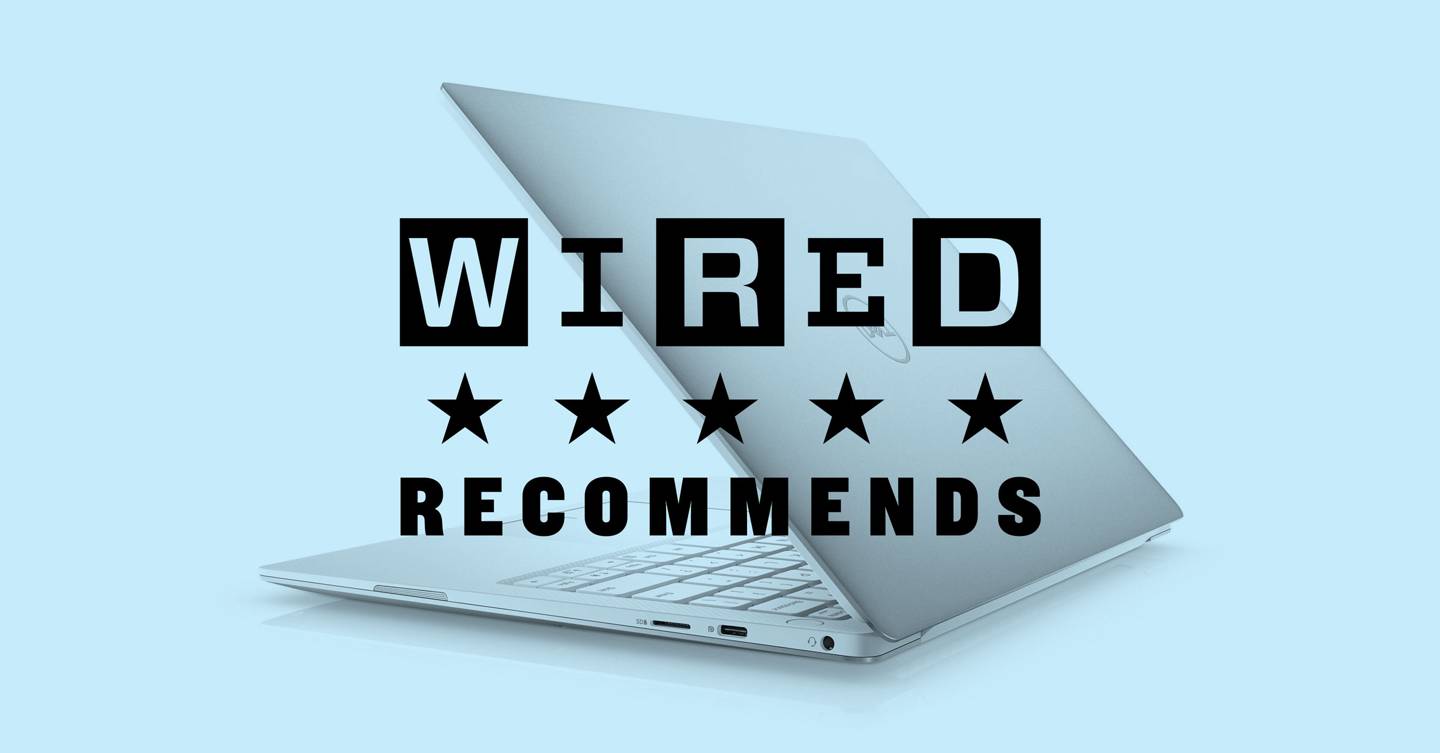


There’s never been so much choice when it comes to buying a laptop, which is great news for us – but it also means that there are more machines to sift through before you find your perfect portable. Even if you’re a tech enthusiast, that still means a time-consuming search as you sort through dozens of potential purchases. That’s not ideal – which is why we’ve picked out the best laptops in every key category. Here’s the best of what you can buy right now.
What’s the best laptop in 2021?
The Dell XPS 13 Late 2020 (from £1,250) is the best laptop you can buy for most uses. The performance has been boosted with upgrades to the quality screen and the same slim, sturdy ergonomics.
View the Dell XPS 13 (Late 2020) from £1,250 on Amazon
Lenovo’s IdeaPad 5 (£449) is our pick for the best cheap laptop under £500. You get a Full HD screen, great keyboard and impressive AMD processor. The Lenovo Flex 5 2-in-1 (from £500) is also excellent.
View the Lenovo IdeaPad 5 for £429 on Lenovo
If you want a premium laptop without it costing the earth, the best laptop under £900 is the Lenovo Yoga Slim 7 (£750). It feels like a top-quality ultrabook, offers a great range of ports and impressive keyboard as well as a remarkable AMD mobile processor.
View the Lenovo Yoga Slim 7 (£750) on Amazon
WIRED Recommends is your definitive guide to the best technology. Every product featured has been properly tested by WIRED reviewers. Read our list of the best gadgets for our favourite pieces of tech in every category.
Dell XPS 13 (Late 2020)
WIRED Recommends: Dell’s XPS 13 is slim, light and capable


Weight 1.2kg (non-touch) 1.27kg (touch) | Size: 14.8mm thick | Battery life: 12 hours | Screen: 13.4-inch 1080p/4K | RAM: Up to 32GB | Storage: Up to 1TB | CPU: Up to 11th Gen Core i7 | OS: Windows 10 Home
The Dell XPS 13 (from £1,250) has set the standard for compact ultrabooks for several years now. Rivals are fast closing in while Dell’s flagship has stood fairly still. However, the XPS 13 still remains the best laptop you can buy right now.
The rival machine that’s closing in on the XPS 13 the fastest is the Apple MacBook Air M1 (below), representing a leap in efficiency that leads to battery life and performance gains that will marvel many. What keeps Dell’s 13-inch ultrabook just ahead of Apple’s revamped MacBook is a rather sizeable gap when it comes to modern design. Alongside the gorgeous Razer Book 13 (below), the XPS 13 is one of the best looking laptops around.
In particular, it’s the near edge-to-edge 16:10 display that makes this laptop an eye-catcher. When you first open this diminutive laptop, you’ll be astonished by how much screen Dell has managed to pack in and, with the 4K version, the bright colours are absolutely knock out too.
As a productivity machine, the combination of a 16:10 display, portability and blazing fast basic tasking makes this a top pick for working at home. Whether you’re browsing the web with upwards of 15-20 tabs and beyond, working in Office or watching videos, the XPS 13 doesn’t blink. A superb keyboard and trackpad pair exceptionally with the speedy internals, with a surprising amount of key feedback for such a slim device as well as a responsive trackpad. (Although if we’re being picky, a slightly larger trackpad wouldn’t go amiss next time around.)
While Intel’s 11th gen processors are a step up from the last generation, you won’t notice it a massive difference if you’re just using the XPS 13 as a productivity device, an area in which it already excelled. However, you will notice it with more graphics intensive tasks. Previously, the XPS 13 could eke out some very light photo and video editing along with playing some low demand games like Fortnite and Apex Legends at minimal settings to get decent frame rates. The increase isn’t huge but you’ll feel less like you’re just about managing with these graphical tasks now, with the aforementioned games playable at around 1080p and upwards of 30fps on low graphics settings – rather than the bare minimum.
The Dell XPS 13 has occasionally been beaten on specific features but rarely topped when it comes to consistency. However, competitors are catching up and this Dell needs to start standing out more. While the XPS 13 design is premium and sleek in its own right, the lack of an all-metal design like the MacBook Air, Razer Book 13 and Surface Laptop 3 is leaving it wanting amongst these rivals that exude quality.
Then, there’s performance. With the majority of top-notch ultrabooks using Intel’s best mobile chips over recent years, this wasn’t much of a talking point – performance was pretty uniform. However, the efficiency gains of the new MacBook Air M1, bringing a fanless design and enhanced battery life, as well as the value offering of lower-priced AMD ultrabooks, like the Lenovo IdeaPad 5 and HP Envy 13, mean Dell’s time at the top could be in danger. With the XPS 13 getting slightly warmer than one would like in some scenarios, Dell certainly has gains to make here. Intel has its new Alder Lake chips coming this year, which could help Dell in this department, but the XPS 13 can’t afford to rest on its laurels for another year.
Nevertheless, the Dell XPS 13 offers the best combination around if you want a stylish productivity device that can dip into popular games and do some multimedia editing.
Pros: A productivity delight; impressive 16:10 display; good level of keyboard feedback; remarkably compact
Cons: Small range of ports; trackpad could be slightly bigger; somestimes get a bit warm
Price: From £1,250 | Check price on Amazon | Dell | John Lewis
Apple MacBook Air (M1)
The best MacBook and the best laptop for students
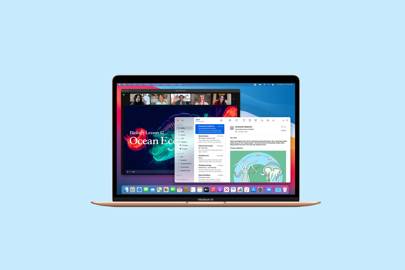

Weight 1.29kg | Size: 4.1-16mm thick | Battery life: 15 hours | Screen: 13.3-inch 2560×1600 | RAM: 8/16GB | Storage: Up to 2TB| CPU: M1 | OS: MacOS Big Sur
After years of using Intel’s processors on its MacBooks, including some rough recent times, Apple decided to replicate its iPhone model and make its own chips for Macs. The result is a new set of efficient yet speedy Macs, raising the bar for all laptop makers – and a new MacBook Air M1 (from £990) taking centre stage.
This new MacBook Air offers a silent, fanless experience that still manages to keep pace with previous iterations and key rivals. As a student or productivity laptop, the new M1 MacBook Air is an absolute dream, breezing through basic tasks like word processing and web browsing.
For more complex tasks like photo and video editing, the new Air isn’t as capable as its fan-equipped MacBook Pro equivalent or the 16-inch MacBook Pro. However, the results are still impressive. In apps such as Pixelmator Pro, the Air makes light work of basic photo editing and some light video editing is certainly a possibility.
One of the most remarkable aspects of the M1 MacBook Air is how it has managed to step up its performance game and ditch its fan while managing to significantly improve its battery life. Instead of the up to 12 hours of battery life touted on the previous Intel-powered MacBook Air, the new model has ramped things up to 18 hours. You’ll be able to manage a work day and keep on going into the next before a charge is required.
The new MacBook Air M1 sets the standard for future ultrabooks, but it isn’t perfect. Apple’s cheapest laptop keeps the same stylish, wedge design the line has had for several years, meaning the Air still lags behind many rivals, including the Dell XPS 13, when it comes to razor-thin bezels. The much-maligned MacBook webcam remains too. Apple touted improved image-processing this time around but it’s not a marked improvement.
Pros: Packs a surprising punch; no fan means it stays quiet; much-improved battery
Cons: Same old design; (sorta) same old webcam
Price: From £990 | Check price on Apple | Amazon | Argos
Lenovo Yoga Slim 7
The best laptop under £900
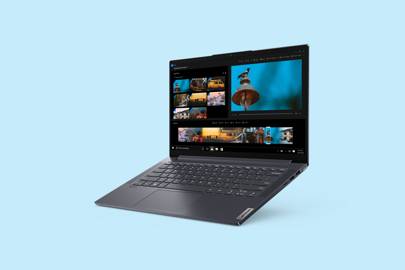

Weight 1.4kg| Size: 14.9mm thick | Battery life: Up to 13 hours | Screen: 14-inch 1080p | RAM: Up to 16GB | Storage: Up to 512GB | CPU: Up to AMD Ryzen 4800U | OS: Windows 10 Home
The Lenovo Yoga Slim 7 (£750) is a remarkable laptop that will rightly have many questioning whether it’s necessary to spend over £1,000 on an ultrabook. It does lack some of the most premium features you can pick up on the Dell XPS 13, LG Gram 17 and other top-tier devices – but, for many, they’re an extra not a necessity.
Taking a look at the Yoga Slim 7 from the outside, it firmly matches the premium design of the best around. Pick it up and you get a quality metal body; you feel like you’re handling an expensive device. Open the lid and it fades away a tad, with the display being surrounded by some slightly out-of-date plastic bezels. However, the keyboard and trackpad look great – with the keyboard offering decent travel and the trackpad being accurate if a little small.
The Yoga Slim 7 is just a stunning laptop for offering great value in areas you may not expect. While the display isn’t OLED and has those less than ideal bezels, the screen quality itself is perfectly good at 1080p, even if it doesn’t get all the bright. Many laptop speakers, especially at prices below £1000, are also often neglected. Not here. The Lenovo stays accurate at higher volumes and offers a good amount of bass for such a small machine.
The crown jewel in this laptop’s value offering is the AMD mobile processor. When using for productivity tasks, this keeps up with the best ultrabooks around – with the ability to handle upwards of 15 tabs and multi-task with Office and streaming apps. The multi-core performance outshines the Intel equivalent on many top-end rivals, meaning you dabble that bit more in video and photo-editing on this laptop – games still aren’t really an option though.
The only thing holding back this laptop is an outdated aspect ratio. Aspect ratios like 16:10, and the more extreme 3:2, let you see more words on the display – ideal for the productivity-centric world of ultrabooks.
Pros: Premium ultrabook at a more sensible price; impressive battery life; delightful keyboard; plenty of ports
Cons: Rather dull display; 16:9; no Thunderbolt 4
Price: £750 | Check price on Amazon | Currys | Argos
LG Gram 17 2021
The best 17-inch laptop
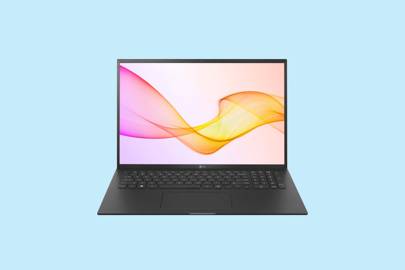

Weight 1.35kg | Size: 17.8mm thick | Battery life: 14 hours | Screen: 17-inch 2560 x 1600 | RAM: Up to 16GB | Storage: Up to 1TB | CPU: Up to 11th Gen Core i7 | OS: Windows 10 Home
In early 2020, the 17-inch LG Gram turned a whole lot of heads – primarily due to its astonishing size and low weight claims. However, the size didn’t cover the fact it felt a tad outdated. The new LG Gram 17 (from £1,399) makes some clever tweaks, including a new stunning Black colour option, that make this one of the best (and interesting) ultrabooks you can buy right now.
The main reason to buy this laptop is the huge 17-inch display. If you’ve ever thought you’d like a large display laptop you still can lug around all day, this is it. That’s because, despite its mammoth size, this laptop only weighs 1.35kg – meaning you just need to make sure your bag is big enough but it won’t break your back. The display itself is stunning – a 16:10 IPS screen and the size makes it so good for productivity, watching movies, multitasking… almost anything really.
To achieve this weight at this size, you might think it has to be of some unflatteringly cheap materials. However, while it doesn’t have the fancy gleaming metal body of an XPS 13 or a MacBook Air, its thinness helps to still give the magnesium alloy a solid feel – it still looks and feels premium. However, it would be fair to feel a little slighted by the cheaper feel given the prices you are paying here. But, matching Dell or Apple’s design would like result in a heavier weight – defeating the purpose of this unique laptop.
The thinness of this laptop hasn’t impacted the typing experience much either. In fact, this is our favourite ultrabook keyboard bar the Surface Laptop 3 – offering heaps of travel and a hugely satisfying click. The same goes for the trackpad, which is huge – because, of course, there’s plenty of space to take advantage of here – as well as responsive and clicky. The size affords a ton of ports too – including two Thunderbolt 4, two USB-A 3.2, an HDMI, a microSD card reader and a headphone jack.
The mammoth screen, impressive keyboard and remarkable lightweight are backed up by Intel’s latest 11th Gen processors and starts at 8GB RAM – meaning, as a productivity device you’ll have no trouble here. The large size affords a large battery too – you should be able to manage between 11-13 hours, meaning you can complete a workday and have some leftover.
Pros: Massive display; lightweight; amazing keyboard; big trackpad; top performer
Cons: Lacking premium materials; no touchscreen
Price: From £1,399 | Check price on Amazon | Currys | LG
HP Spectre x360 14
The best 2-in-1 laptop
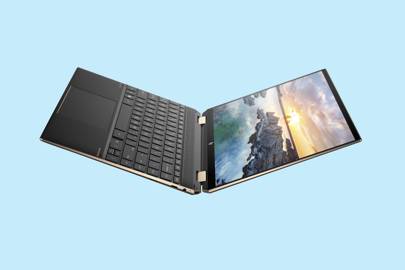

Weight 1.34kg | Size: 17mm thick | Battery life: 11 hours | Screen: 13.5-inch, Up to 3000 x 2000 | RAM: Up to 32GB | Storage: Up to 1TB | CPU: Up to 11th Gen Core i7 | OS: Windows 10 Home
Unlike other high-end laptop brands – like Dell, Microsoft and more – HP has had a 2-in-1 laptop as its ultimate flagship ultrabook for several years now. The HP Spectre x360 14 (from £1,200) takes this to the next level by adding a new model that adopts the most coveted of productivity features – a 3:2 display.
This new 14-inch model sits neatly between the 13-inch and 15-inch versions, coming with the design of the larger equivalent meaning that there’s room for a speaker grill above the keyboard. If you’re at all familiar with this range then there’s little change to the design, the Spectre x360 range offers sharper and more angular edges and corners than your average ultrabook. To some it may be a refreshing change but, in daily use, these edges can make it a tad uncomfortable to hold.
When you’re handling this 2-in-1, you’ll find it super easy to flip it between tent, tablet and regular old laptop mode – with a strong but easily manoeuvrable hinge. The design affords a half-decent port selection – offering more than the measly dual USB-C and headphone jack setups of the Dell XPS 13 and MacBook Air but less than the well-equipped Razer Book 13 – the result is dual USB-C ports, a headphone jack, a microSD card reader and a USB-A port.
Day-to-day, the 11th gen Intel processor performance, alongside upwards of 8GB RAM, makes this laptop feel relatively on par with the likes of the Dell XPS 13 and LG Gram 17 – However, our testing did show it actually falls on single and multi-core performance. If you’re a productivity user, this likely won’t be a big deal but if you’re trying to eke out some light editing – or just want the best value for your £1,200+ – then you may want to opt for one of those aforementioned devices.
On top of the horsepower, the 3:2 display goes some way to making this one of the best displays around for productivity work – packing a lot of words on your screen when reading articles or writing documents. The quality of the display helps a ton in this regard too. If you pick up the pricier OLED model, you’ll be greeted by phenomenally bright and detailed visuals – making this a great 2-in-1 for work and watching videos too.
Pros: Gorgeous OLED display on 3K2K model; eye-catching angular design; decent keyboard; good port selection
Cons: Trackpad not very clicky
Price: From £1,200 | Check price on HP | Amazon
Lenovo IdeaPad 5
The best laptop under £500
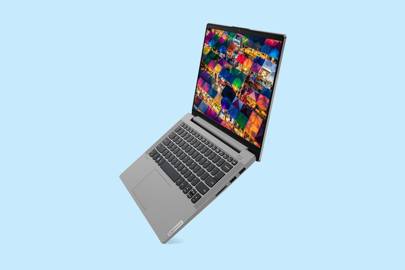

Weight 1.4kg | Size: 19mm thick | Battery life: 10 hours | Screen: 14-inch 1080p | RAM: 8GB | Storage: 128GB SSD | CPU: AMD Ryzen 3 | OS: Windows 10 Home
While value for performance is a stand out trait here, with the AMD CPU, 8GB RAM and SSD storage combo that makes many tasks on this machine run like a dream, looks aren’t compromised. The Lenovo IdeaPad 5 (£449) doesn’t lag too far behind the high quality designs of some top ultrabooks, the materials might not be as premium but Lenovo’s laptop is sleek nonetheless. The sleekness doesn’t mean you are saddled with a lacklustre keyboard either. The IdeaPad 5 keyboard does lack travel but it’s quiet, accurate and won’t induce fatigue.
Productivity on the IdeaPad 5 is a breeze. If you’re a user who spends most of your time in Microsoft Office or browsing the web, you’ll notice little difference between this machine and what you’d get for upwards of £1000. In the graphics department, you’ll be able to carry out some very light photo and video-editing while also being able to take on some casual games like Fortnite and Minecraft on low graphics settings.
The IdeaPad 5 oozes convenience too, with its relatively light 1.4kg and 19mm thickness making it an easy device to lug around. Ports help in this department as well, offering 2x USB 3 ports, an HDMI output, SD card slot and a single USB-C port (that can be used for charging too). A fingerprint reader and Wi-Fi 6 also makes this laptop one that’s set for the future. You won’t be bogged down in constantly charging the IdeaPad 5 either, with a 57Wh battery that can manage between 8-10 hours.
This laptop offers a lot for your money but, alas, it isn’t perfect. The display is where the IdeaPad 5 is left slightly wanting, with the 14-inch display not getting all that bright and colours being a tad washed out. Another minor niggle is how warm this device gets, it isn’t concerning but it’s slightly more than you’d want – thankfully, this doesn’t equate to overly loud fans.
Pros: Impressive performance; decent mic; pleasing and convenient design
Cons: Below average display; so-so trackpad
Price: £449 | Check price on Lenovo
Razer Blade 15
The best gaming laptop right now


The Razer Blade 15 (from £1,400) has become one of the most popular gaming laptops. Razer isn’t making huge updates to this machine these days – like Dell with its XPS 13, the firm concentrates on refining a winning formula.
The latest version of the Blade 15 – dubbed the Advanced model – makes significant changes to the internals. The graphics hardware has been given a big boost: the selection of GPUs now includes Nvidia’s RTX 2070 Super and RTX 2080 Super cards. On the processing side, 10th generation Intel Core i7 parts are available on some models.
The Blade is now available with screen refresh rates that go all the way up to 300Hz – which makes it the fastest laptop screen on the market, and ideal for high-end esports players. Elsewhere, it’s possible to opt for more conventional 144Hz or 60Hz displays, and OLED 4K touch models are available.
Elsewhere, the Blade has Wi-Fi 6, 16GB of dual-channel memory, a 1TB SSD and an 80Wh battery. Don’t expect great longevity from this machine, but be aware that it does last longer than most gaming notebooks.
On the outside, little has changed. The Blade still looks brilliant – all dark brushed metal – and it’s still less than 20mm thick. It weighs a reasonable 2.1kg, and it has an RGB LED keyboard that’s fast and reliable, if a little shallow.
The most affordable Blade 15 costs £1,459, and top prices are unknown right now – the new Advanced models will hit retail any day. No matter which one you buy, the Blade 15 remains the best gaming option on the market thanks to its superb performance, stunning screens and impressive design.
Also consider: Looking for a gaming laptop under £1,000? Try MSI’s GF65 Thin (£899), which can take care of 1080p single-player games and e-sports.
Pros: Loads of gaming power; stunning screen options; broad range of specifications
Cons: Keyboard a little shallow; audible fan noise
Price: From £1,400 | Check price on Amazon | Razer
Asus Chromebook Flip C434
Our favourite Chromebook is a genuine Windows replacement
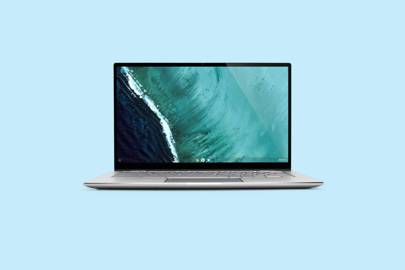

Weight: 1.45kg | Size: 15.7mm thick | Battery life: Up to 10 hours | Screen: 14-inch 1080p 16:9 | RAM: 8GB | Storage: 32/64/128GB | CPU: Intel Core m3/i5/i7 | OS: Chrome OS
With an aluminium shell, a bright, sharp 1080p touchscreen and a solid range of specifications, Asus’ Chromebook Flip C434 (£499) looks and performs like a laptop twice the price. In fact, it’s our pick for best Chromebook over Google’s high-end Pixelbook.
Aside from the plasticky trackpad – we’d prefer textured glass, to be perfectly honest – it’s difficult to find fault with the Flip C434, so called for its 360 degree hinge. There’s no stylus to use it in touchscreen mode, though.
Otherwise, it’s all rather pleasing. It’s an Intel generation ahead – for now – of the Pixelbook and performance is very reliable, plus there’s two USB-C ports, one full-size USB and a microSD slot, which is all very handy. The keyboard, too, is deep enough and responsive. Sure, you can’t forget this is still a Chromebook but for browsing and productivity apps, this works nicely, plus there’s Android apps or games too if you insist.
Pros: Well specced; aluminium body; cheaper than Pixelbook
Cons: Trackpad is plastic; no stylus (as on some rivals)
Price: From £499 | Check price on Amazon | Currys | Argos
Apple MacBook Pro (M1)
Great for battery life and sustained performance
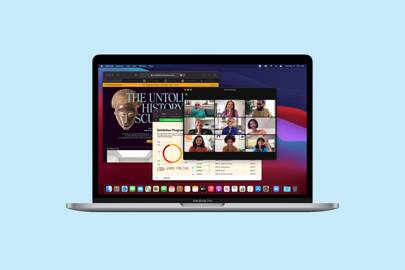

Weight 1.4kg | Size: 15.6mm thick | Battery life: 17 hours | Screen: 13.3-inch 2560×1600 | RAM: 8GB/16GB | Storage: Up to 2TB | CPU: M1 | OS: MacOS Big Sur
The new MacBook Pro M1 (from £1,189) is a device that has some awkward market positioning – being trumped by its lower power, fanless and cheaper counterpart, the M1 MacBook Air (above), upon its reveal and also not being powerful enough to accommodate power users who currently use Intel-powered 16-inch MacBook Pros. However, for those that find the new 13-inch MacBook Pro does fit their needs, you won’t be disappointed.
Like the new Air, it’s the new M1 Apple Silicon chip that defines this device – offering blistering productivity performance and surprisingly good battery life. The MacBook Pro takes these features slightly further than its fanless equivalent though.
Sporting fans means that the Pro version can sustain high performance for longer, allowing you to push this laptop that bit more. There’s a battery life boost too, to give you that extra bit of encouragement to fork out the extra cash – up to 17 hours for the Pro compared to up to 15 hours on the Air. The slight upgrades are rounded out with a brighter screen and improved speakers. Neither are startling but this quartet of added features could be worth it for you.
For those looking beyond productivity, this device may stretch the credulity of the “Pro” label but it can tackle some basic graphical tasks with ease – especially in M1 optimised apps. Our testing in HandBrake saw the MacBook Pro finish in 85-90 per cent of the time the MacBook Air took, with this test finally seeing the fans springing into action.
A lack of graphical oomph will likely lead many to wait for an upgraded 16-inch model or rumoured 14-inch revamp but there are a couple of other reasons that provide pause for thought too. Despite the M1 revamp, the design does remain the same and even some software tweaks to the webcam don’t save its admittedly poor quality. The limited selection of ports – just two Thunderbolt 3 USB-C ports – won’t be enough for many too.
Nevertheless, the MacBook Pro represents the best Apple ultrabook you can get right now. You may not get the graphical horsepower of the 16-inch and, to many, it may feel like overkill compared to the new stellar M1 MacBook Air but, if you’re a productivity power user who wants immense battery life and stunning tasking performance, the Pro should be on your radar.
Pros: Speedy performance; remarkable battery life; rarely active fan
Cons: Webcam still not great; same old design
Price: From £1,189 | Check price on Apple | Amazon | John Lewis
Razer Book 13
A minimalist alternative to the Dell
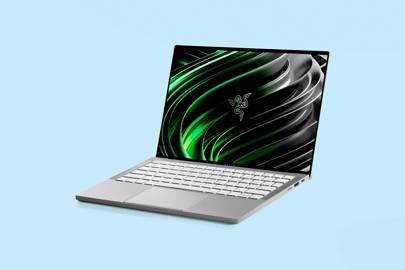

Weight 1.34kg (non touch) 1.4kg (touch) | Size: 15.15mm thick | Battery life: 10 hours | Screen: 13.4-inch 1080p/4K | RAM: 8/16GB | Storage: Up to 512GB | CPU: Up to 11th Gen Core i7 | OS: Windows 10 Home
Razer announced its new productivity laptop without much fanfare, an interesting proposition but a departure from what its regular fans might be interested in. However, the Razer Book 13 (from £1,200) is undoubtedly worthy of praise – specifically for its modern and minimalist design.
With the new Razer productivity machine, you get all the performance you’d expect from an ultrabook in 2021 – providing a comparable experience to the Dell XPS 13, HP Spectre x360 13 and more. Delightfully, the Razer Book 13 also gets a 16:10 display, making for a screen that’s even better for day-to-day work and browsing the web. Like its Dell equivalent, the display pushes very close to the edge of the laptop – and it looks stunning.
The aspect ratio helps this refreshingly portable 13-inch device still provide ample room for working and multitasking. On top of performance and the display, productivity is greatly enhanced by one of the best keyboards we’ve used recently. The keyboard is clicky but, most notably, provides a decent amount of feedback that’s rarely felt on a laptop of this size. The trackpad is equally good, providing accurate and impactful clicks from corner-to-corner, even if it is a tad small.
What prevents the Razer Book 13 from reaching greatness with its freshman iteration is how it is cooled. The Razer Book 13 gets surprisingly warm on its underside, even without pushing its performance capabilities, and the fans also seem to get going far earlier than you’d expect.
Nevertheless, this laptop is a stunning first try from Razer and it’s the best looking ultrabook you can buy right now. The second version of this laptop could very well reach the top of this list; that’s how much we like it.
Pros: Best-in-class design; remarkable thin bezels; comfortable keyboard
Cons: Can get a bit warm; awkward key placement
Price: From £1,200 | Check price on Amazon | Razer | eBuyer
Razer Blade Pro
A media laptop for gaming and video with a THX-certified screen
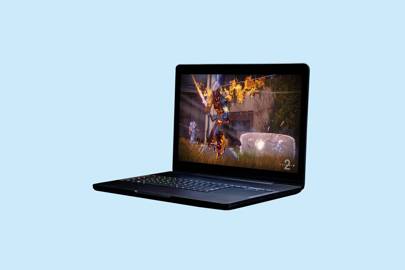

Weight: 2.75kg | Size: 19.9mm thick | Battery life: 2-4 hours | Screen: 17.3-inch 1080p/4K | RAM: 16GB | Storage: 512GB-2TB SSD | CPU: 2.6GHz 9th gen Core i7 | OS: Windows 10 Home
Razer isn’t just a gaming company – its largest laptop, the Razer Blade Pro (from £2,199), scythes through the latest triple-A titles but can also handle work and play with equal aplomb.
The updated Blade Pro is still available with 1080p and 4K display options, but the former is available with 144Hz and 240Hz refresh rates and the latter has been upgraded to 120Hz. All of those rates can make gaming and animation butter-smooth, with that 240Hz setting the best bet for esports and the 4K 120Hz option a stunning choice for 4K media and top-tier gaming. The speakers are superb too: punchy, loud and detailed.
On the inside, the Blade Pro is available with RTX 2060, 2070 or 2080 graphics, with that latter option capable of 4K gaming. All three are superb options for photo and video work.
Elsewhere, the Blade Pro has a Core i7 CPU, huge SSDs and 16GB of memory, with those latter two components upgradeable. It’s been upgraded with Wi-Fi 6 and 2.5Gbps Ethernet – so connectivity is stellar.
On the outside, there are three full-size USB 3.2 ports, two USB 3.2 Type-C connections, a Thunderbolt 3 port and an SD card reader, so it’s set up for handling loads of peripherals and extra screens. And, as ever, it looks great, with smart design that also has great build quality.
The trackpad remains excellent and has moved back beneath the keyboard, and that keyboard is excellent – crisp and comfortable, with per-key RGB LED backlighting.
The Blade Pro is big, bold and powerful, with enough quality and grunt to handle virtually everything, from media work to 4K movie playback and top-tier games. Sure it’s large and expensive, but it’s also very impressive.
Pros: Fantastic screen options; great exterior design; powerful
Cons: Heavy; can be expensive
Price: From £2,199 | Check price on Razer[/b]| Amazon
Dell Precision 7740
A high-end workstation for photo and video editing
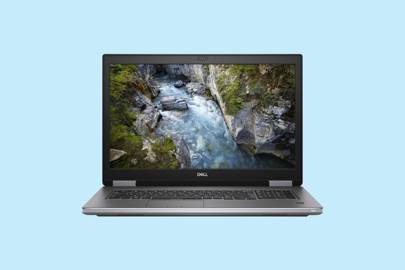

Weight: 3kg | Size: 25mm thick | Battery life: Up to 5 hours | Screen: 17.3-inch 1080p/4K | RAM: 8-128GB | Storage: 500GB HDD, 256GB SSD, up to 4x drives | CPU: 9th gen Core i5 or i7, Intel Xeon available | OS: Windows 10 Pro, Ubuntu 18.04
If you regularly handle video editing, CAD design or huge database tools on the road, then you’ll need a mobile workstation – and none are better than the Dell Precision 7740 (from £2,846).
On the inside, the Precision can be equipped with fast ninth-generation CPUs alongside heavyweight Intel Xeon chips, and ECC memory up to 64GB or 128GB. You can have SSDs in Raid 0, 1 or 5 and up to four drives, including HDDs and SSDs.
The powerful CPUs can still be paired with AMD Radeon Pro or Nvidia’s pro Quadro graphics chipsets – and with huge amounts of memory and storage. You simply won’t find a laptop with this much raw power – and, crucially, you won’t find any other laptop that has this many customisation options. Plus you get the benefits of a Thunderbolt 3 port – the USB 3.1 and SD card reader ports remain with extras like a Windows Hello fingerprint reader and a camera shutter.
On the outside you can opt for 100% sRGB screens with 1080p or 4K resolutions, and the entire machine undergoes military testing – so you can be certain that it’ll survive life on the road.
The Dell Precision 7740 offers enormous power and versatility, but there are inevitable downsides. Battery life won’t be particularly good but Dell has at least got it down to 25mm thick and 3.08kg for this 17.3-inch machine. The AC adapters are smaller now, too.
The price starts at £1,927 and can go incredibly high due to the level of performance available. If you do want true desktop power on the road, though, it’s worth paying for – and nothing does it better than the Precision 7740.
Also consider: If your preferred applications use Apple OS X, then the MacBook Pro 16 (from £2,399) is an alternative for photo and video work – it has excellent, crisp screen quality, Core i7 CPUs and decent AMD graphics chips.
Pros: Unbeatable mobile power; unrivalled customisation
Cons: Necessarily heavy and bulky design; expensive
Price: From £2,846 | Check price on Dell